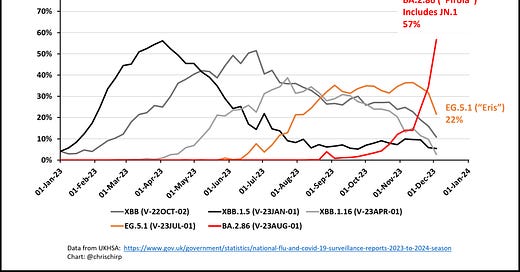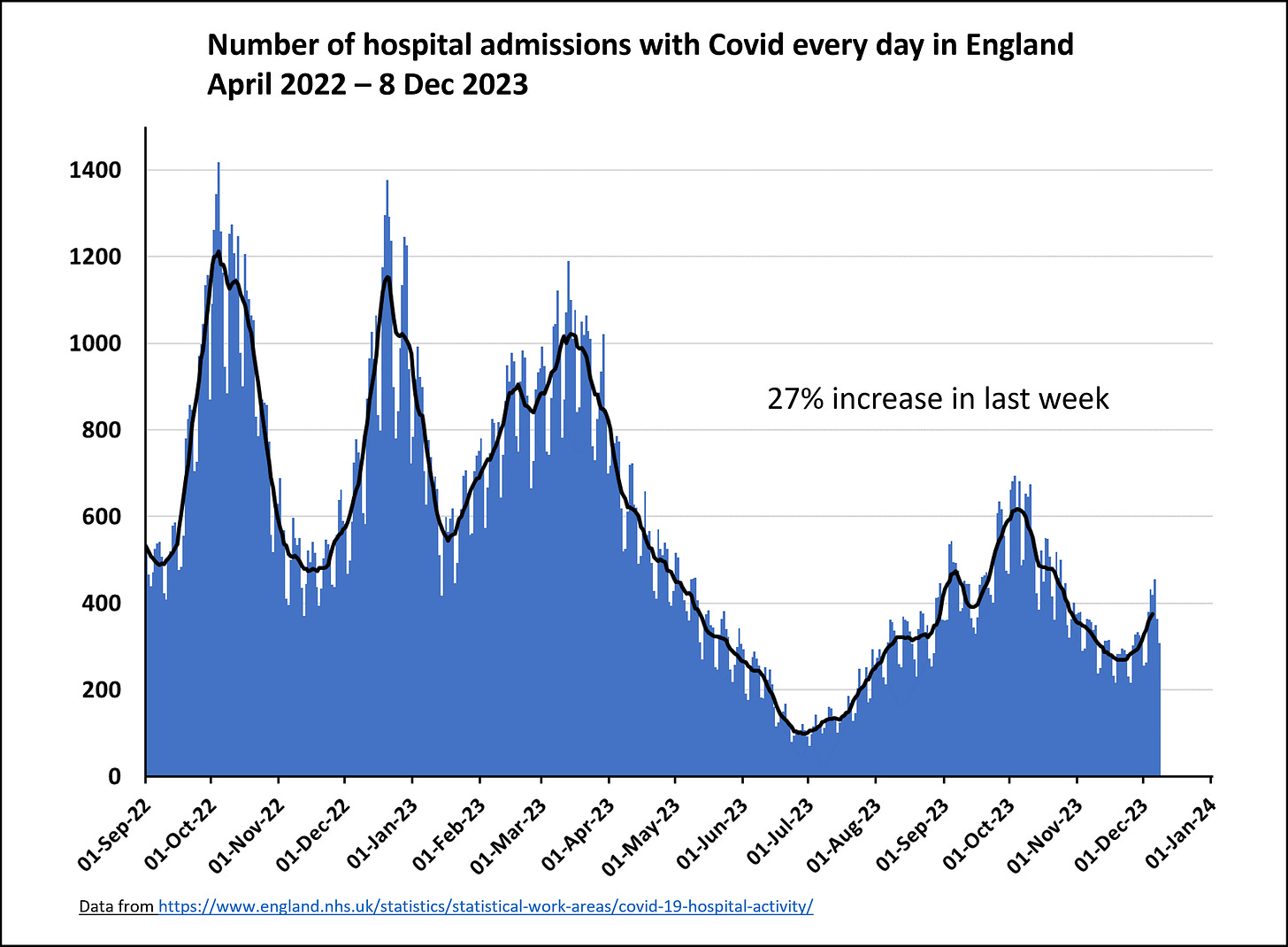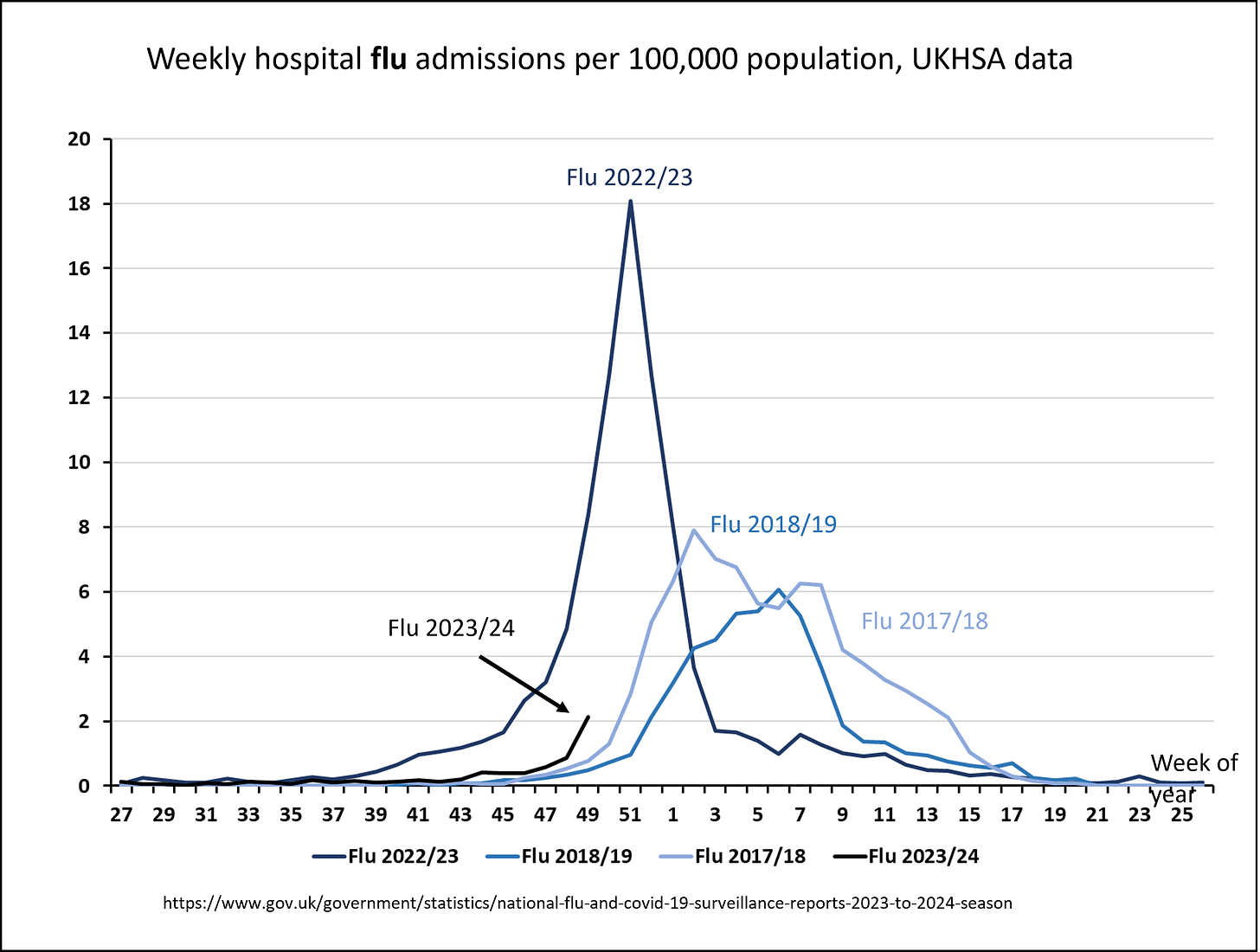Unfortunately not good news this week for England. The rise of the JN.1 subvariant of the “Pirola” variant that emerged globally in August is causing significant waves all over the world, particularly in Europe. It is now contributing to a new wave here, only two months after our last wave. Together with now rapidly rising flu, and a vulnerable NHS, this Covid wave has the potential to seriously disrupt our lives and the NHS over the next month or two.
JN.1 variant
The most recent UKHSA surveillance report showed that the “Pirola” variant, BA.2.86, is now dominant in England. Growth has accelerated in the last three weeks, likely due to Pirola subvariant JN.1 which appeared in October and has grown markedly faster than its parent.
Compared to BA.2.86, JN.1 has picked up a new mutation which appears to have increased its infectivity and immune evasion. Certainly, its rapid increase over the past month represents the most signficant change in the global variant landscape since Omicron XBB’s rise a year ago. JN.1 will be dominant in England very soon, if it isn’t already, and is likely to drive a significant wave.
Hospital admissions in England for Covid and Flu
Hospital admissions with Covid in England increased by 27% over the most recent week. Admissions are still quite a bit lower than peaks earlier this year and the majority of over 65s have received the autumn booster, which should help damp the size of the peak, especially since the JN.1 wave in France has so far had only a moderate impact on admissions. However, it’s been a while since we’ve seen a variant take over like this, so I’m not going to bet on it.
The NHS really cannot afford even a moderate wave. The latest emergency care indicators are tracking last year far too closely for anyone’s comfort (see Bob Hawkins’ recent dive into NHS stats here). The promised extra capacity for this winter has not arrived. Last month I wrote that only luck would avoid a repeat of last year’s catastrophic NHS winter, by avoiding combined waves of respiratory illness. Unfortunately, alongside the recent increase in Covid hospital admissions, flu season has just started. Flu admissions more than doubled in the most recent week (albeit from a very low base).
While we can’t know the eventual size of the peak, pre-pandemic years suggest that flu admissions will peak four to six weeks from now. It is therefore likely that there will be a few weeks in late December and early January when admissions from both flu and Covid will be high enough to cause significant additional strain on the NHS.
Summary
Things are looking worse than they did a few weeks ago. We are about to have a great deal of intergenerational mixing over the Christmas holidays and then more mixing over New Year. Mitigating factors remain a good (but not great) booster uptake among those eligible this autumn and good (but waning) protection against severe illness from previous infection across the population. This waning immunity means that for many their next bout of Covid might be pretty unpleasant (as indeed many are currently reporting).
But ultimately, the signs are that the NHS is going to have a bad or a very bad winter. The Covid infection wave is going to be large, driving more Long Covid, and even if hospital admissions are not as high as previously, there will still be an increase in Covid deaths.
The ONS winter infection survey will report next week and provide a crucial update as we head into Christmas. It is also worth considering which Christmas parties are worth risking being sick over the holidays (whether Covid or flu). I would definitely encourage opening windows when socialising indoors, mask wearing on public transport and certainly in health care settings.








Thanks very much again Prof Chris!
JN1 is definitely a vaccine evader. I can also say that having flu from a few days before + at the same time as COVID is not a good place 😂